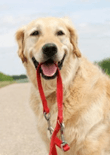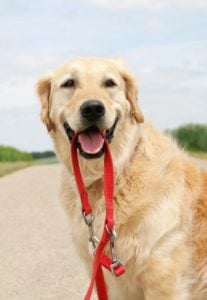The Dog Walking Formula
By Sally Gutteridge | Posts

 Dog walking can be made easy and fun by teaching your canine to behave nicely both on and off leash. This could take effort with some dogs, however all dogs will learn when taught properly, therefore the effort will be worth it.
Dog walking can be made easy and fun by teaching your canine to behave nicely both on and off leash. This could take effort with some dogs, however all dogs will learn when taught properly, therefore the effort will be worth it.
To enjoy dog walking there are three areas that you can concentrate on. These are outlined below;
On leash obedience
On leash obedience is paramount if you are going to enjoy dog walking. If your dog is adept at dragging you around, then you will not enjoy your dog walking experiences.
Often check collars or similar equipment is available to improve the dog’s behavior on the leash. This type of equipment should really be avoided and it is not based on a positive experience for the dog. An exception to this is the use of a harness or head collar if the dog is simply too strong to handle. Both the harness or head collar can be used together with positive dog training to improve the dog’s behavior on leash.
It is quite easy to improve a dog’s behavior, when dog walking on leash, using positive reinforcement.
Positive reinforcement works by rewarding the behavior that you would like the dog to repeat. This reinforcement is amalgamated with the removal of any type of reward when the dog is behaving in an unhelpful manner. So to improve leash walking it is important to encourage a loose leash by rewarding it.
Here is an example of how to carry this out in easy stages;
Off leash obedience
Recall is very important when dog walking around people and other dogs. This is another habit that needs to be built gradually. Here are some recall stages and tips to help you successfully call your dog back;
Distractions
If you have successfully trained your dog in on and off leash obedience by reinforcing his attention on you then you can begin to introduce distractions. Remember to always set your dog up for success by introducing distractions when he can cope with them. If you need to make his reward tastier or interesting when introducing distractions than that’s fine, as your dog learns you can lower the value of reward.
Session expired
Please log in again. The login page will open in a new tab. After logging in you can close it and return to this page.